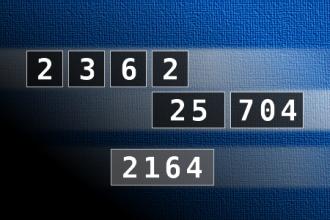Calculate the number 2164
NUMBERMANIA: Calculate the number 2164 using numbers [2, 3, 6, 2, 25, 704] and basic arithmetic operations (+, -, *, /). Each of the numbers can be used only once.Correct answers: 12
The first user who solved this task is Nasrin 24 T.
#brainteasers #math #numbermania

A college pizza delivery boy a...
A college pizza delivery boy arrived at the house of Mr.Smith. He delivered the pizza to his trailer. After giving it to him, Mr. Smith asked: "What is the usual tip?"
"Well," replied the youth, "this is my first trip here, but the other guys say if I get a quarter out of you, I'll be doing great."
"Is that so?" snorted Mr. Smith. "Well, just to show them how wrong they are, here's five dollars."
"Thanks," replied the youth, "I'll put this in my school fund."
"What are you studying in school?" asked Larry.
The lad smiled and said: "Applied psychology."
"Well," replied the youth, "this is my first trip here, but the other guys say if I get a quarter out of you, I'll be doing great."
"Is that so?" snorted Mr. Smith. "Well, just to show them how wrong they are, here's five dollars."
"Thanks," replied the youth, "I'll put this in my school fund."
"What are you studying in school?" asked Larry.
The lad smiled and said: "Applied psychology."

